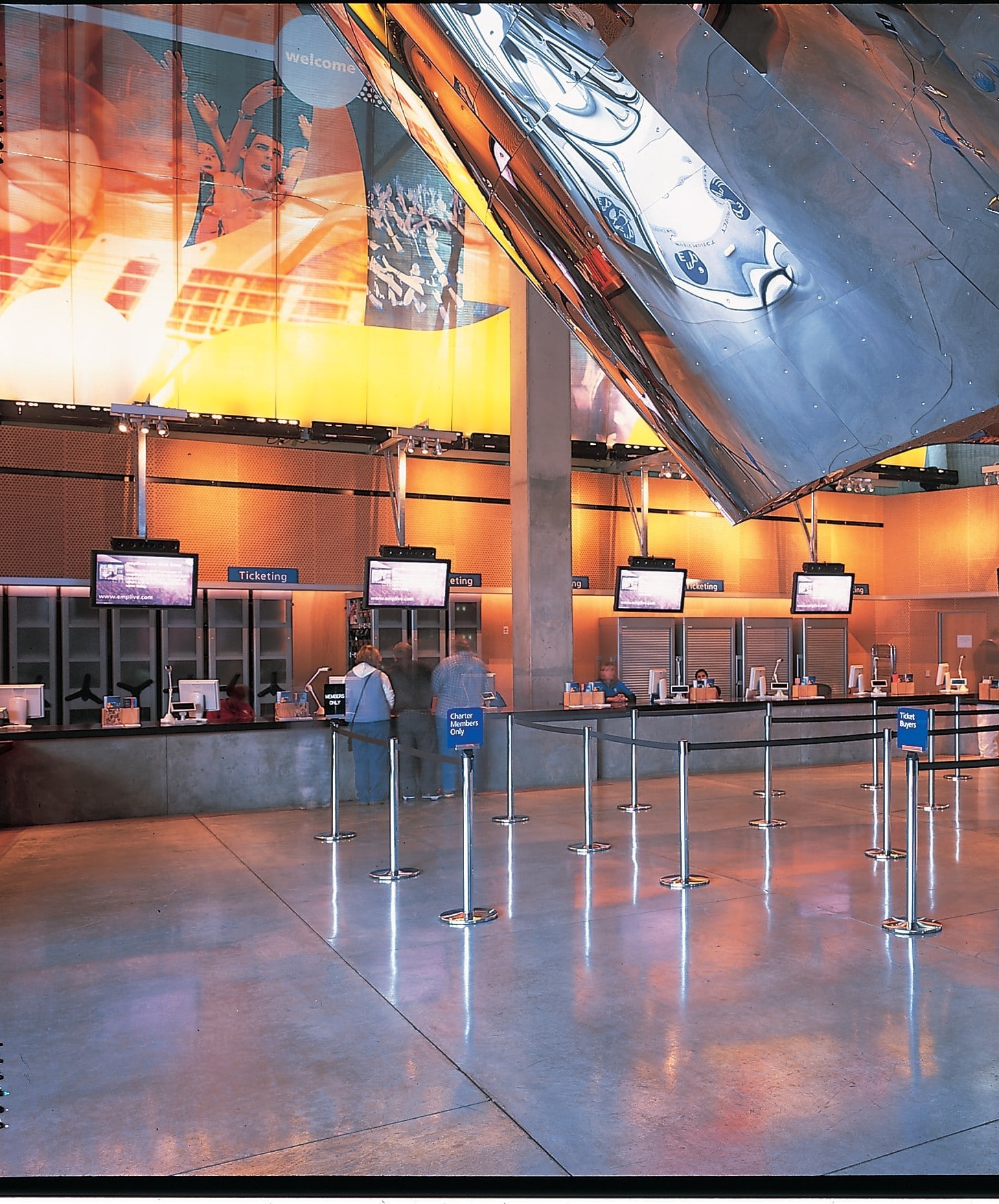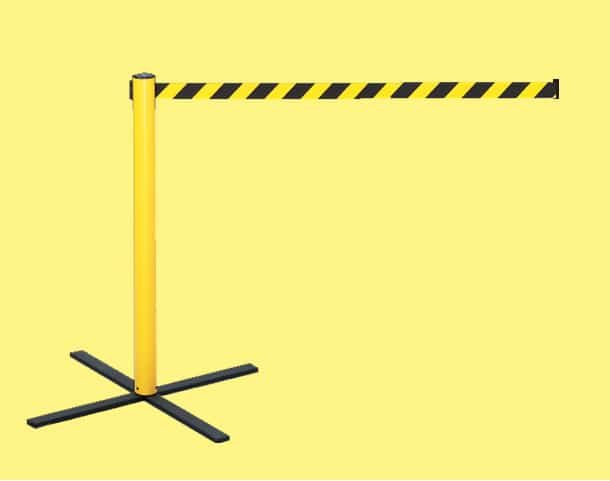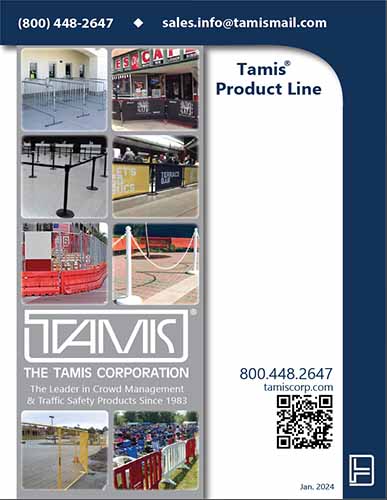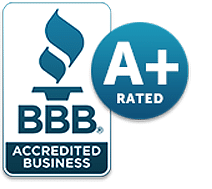Queue Management Systems, Products and Best Practices
Last updated Thursday, May 26th, 2022
Introduction
When gathered at events or commercial establishments, people generally expect that they may have to wait in line. Along with this acceptance, however, is the expectation that the line will be managed competently and that patrons will be treated fairly.
Queue management (also known as line management) is an established business practice and, to handle it properly, sites need not reinvent the wheel. There are established processes and commonly-used tools which are widely accepted.
There are significant downsides to ignoring the ramifications of poorly-executed line management. The death of a Wal-Mart employee due to a stampede by shoppers on “Black Friday” in November 2008 brought the subject of line management to the national headlines.
A site or event with poor line management can create unhappy patrons which can result in potentially lost business. But, more significantly, if these patrons’ attitudes move beyond unhappiness into anger or rage, crowd management problems could result in negative publicity or even, in extreme cases, public scenes which could result in unrest, physical danger, and lawsuits.
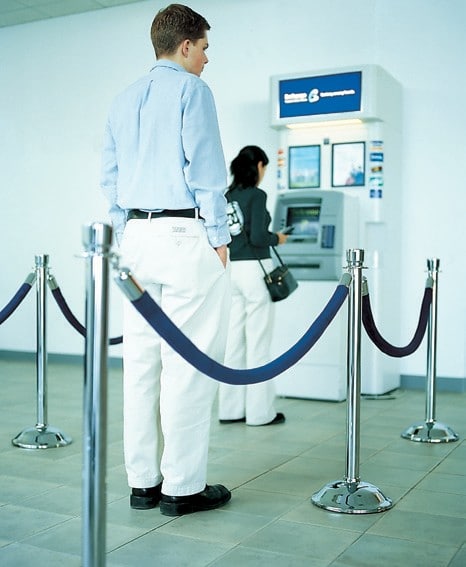
Line Management Psychology
Queuing psychology – the study of improving the experience of people waiting in lines – has been researched for over three decades. The landmark paper “The Psychology of Queuing and Social Justice,” by Dr. Richard Larson, was published in 1977. Larson, now the director of the Center for Engineering Systems Fundamentals at the Massachusetts Institute of Technology, has concluded that eliminating “empty time” in a line makes waits seem shorter, and that fair play (the concept of “first come, first served”) is the basis for most successful lines.
As a result of queue psychology research, most banks, airlines, and fast-food restaurants have changed their line philosophy since the late 1970s.
Many had previously featured multiple lines in front of each employee (cashier,
agent, teller, etc.), an arrangement in which patrons often ended up making the frustrating choice of a slow line. The “first-come, first-serve” serpentine line is now commonly accepted as the system which is more customer-friendly.
Disney’s Optimum Queue Management
According to the New York Times, “Disney World long ago turned the art of crowd control into a science.” The Disney theme parks are viewed as a textbook example of effective line management, and the company employs approximately 75 industrial engineers who work on queue management issues for its worldwide parks.
Interactive screens entertain patrons in many lines, and signs inform those in line about the estimated length of their wait. Constantly monitoring wait times, the parks will also direct popular characters (such as Goofy or Captain Jack Sparrow) to make the waiting experience more eventful for customers. And Disney has recently added video games to many rides’ waiting line areas.
Business Impact
The goal of queue management is to improve the customer experience while minimizing costs and maximizing profits. The bottom line is making customers comfortable. To accomplish this, an establishment should do everything possible to avoid waiting line congestion.
Wait time – not prices, not selection, not product quality – is the number one factor impacting customer satisfaction. And when it comes to waiting time, perception is more important than reality. Studies have shown that customers perceive wait times to be nearly 25% longer than they actually are. A recent study revealed that a wait that exceeds six minutes can often be a breaking point for a customer. Many customers abandon their attempt to purchase at that point.
What happens when a patron encounters long lines (or what they perceive to be a long wait time)? The reactions can include:
Balking: Deciding against even entering the queue, and leaving the store
Reneging: Entering the line, but then becoming impatient and eventually leaving the line and store
Jockeying: In cases where there are multiple lines (such as supermarkets or some big-box stores), customers will shift from one line to another.
“Wait time – not prices, not selection, not product quality – is the number one factor impacting customer satisfaction. “
When an establishment’s poorly-planned or poorly-executed waiting lines drive a customer away, not only does it lose the sale at hand, but there is a huge opportunity cost. Future sales are also lost and the store may receive poor word-of-mouth and bad publicity.
Providing information to customers – or entertaining them – when they are in line reduces their perceived wait time. If their time is occupied, it feels shorter than if their time is unoccupied (even if it is, in fact, the same amount of time).
Customer Flow Management
Determining the optimum queue management plan for any given location is often part of a larger assessment of customer behavior and satisfaction.
Customer Flow Management (CFM) is a process that takes into account the entire customer experience, from the time they arrive at your site to the completion of their “transaction” to post-service analysis. Any business which has face-to-face dealings with customers – including retail stores, restaurants, banks and financial service providers,
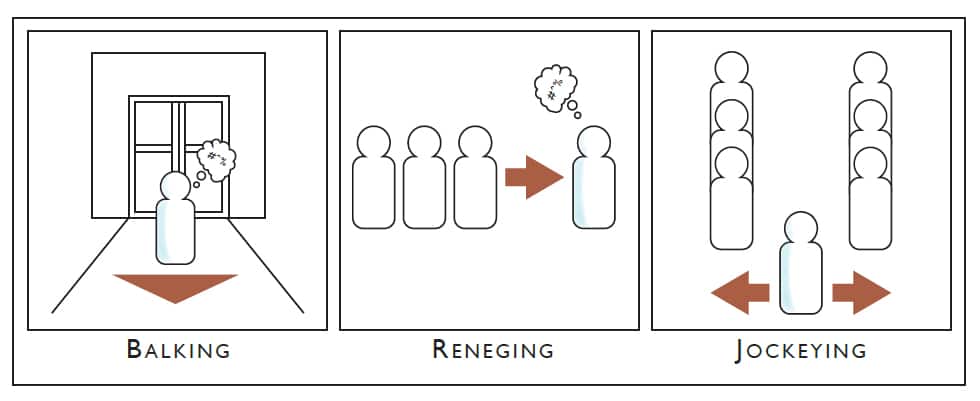
social or government service offices, hospitals, and other medical facilities – can increase their level of customer service satisfaction and boost their bottom line by implementing basic CFM practices.
Customer Flow Management plans have proven to be increase sales (both in terms of immediate impulse buys and future customer loyalty) by producing happier customers. It increases your staff productivity (thus decreasing your costs) by efficiently matching staff members to customers. And it gives you management data about your customers and your processes, which can lead to ongoing competitive advantages.
increase sales by producing happier customers
The first step to implementing Customer Flow Management is to assess your current situation. Gather data on:
- the number of customers at your site per hour or per day
- your peak customer times
- the average customer wait time
- the number of “open” service points you have at any given time
- the average amount of time it takes to service a customer
- all feedback (both positive and negative) from customers
- any identifiable patterns regarding your staff’s productivity.
Visualize the improvements you want to make and establish your key performance indicators (KPIs) to measure how CFM can align with your targeted goals. Is your top priority to increase sales? To increase customer satisfaction levels? To maximize staff efficiency? Identifying KPIs can help you prioritize which Customer Flow Management techniques you will initially use.
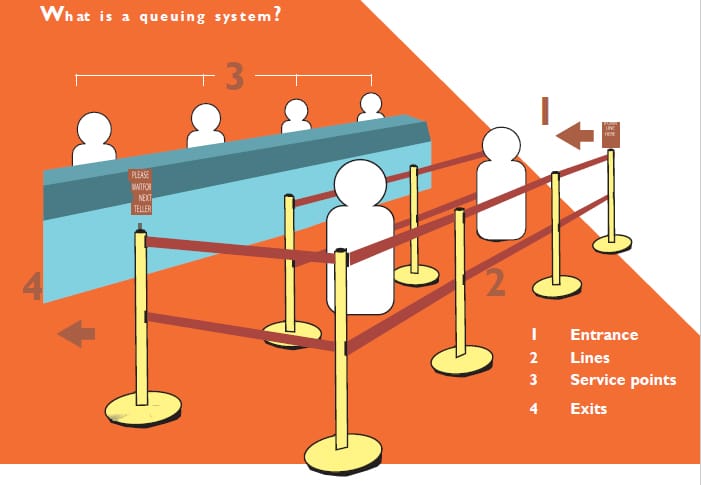
A thorough analysis of your current situation may lead you to conclude that one or more of the following actions will improve your customer flow management:
- You may need to redesign your physical space and move fixtures so that a line management system works logistically given your customer numbers and available space
- You’ll probably need to acquire line management products (or enhance your current supply). The nature of these products will depend on whether you plan to roll out a linear queuing system or a virtual queuing system (both explained below)
- A linear queuing system will employ line management products, such as a portable post and retractable belt system, or a traditional post and rope system. Other related products include signage, merchandising fixtures (to enable customers to make point of purchase sales while they are in line), and possibly audio or video alert systems (to inform patrons of when the next available staff member is ready to serve).
- A virtual queuing system will likely require components such as kiosks, video display units, and accompanying software.
- Set up a system to analyze the data after the rollout of your Customer Flow Management process. Compare the results to your previous process. Build-in time and materials for staff training to respond to the plusses and minuses of what your data tells you.
Different Queuing Systems
How do you know whether your location will benefit most from a linear queuing system or a virtual queuing system? Different environments require different queuing systems.
Linear Queuing
Linear queuing is most frequently used in retail applications. Linear queuing is perceived as fair, and wait time is minimized, as one patron is ready to be served as soon as another is finished.
The most common type of linear waiting line is one in which there is a single line and a single cashier or service counter. This is usually the situation in small stores and some fast-food restaurants. Usually, only minimal line management products are needed in these settings – perhaps a few stanchions (with accompanying retractable belts or ropes) are necessary to visually denote the line space.
For busier locations, a more elaborate queuing system is the “Single Queue – Multiple Service Points” arrangement. This “first come, first serve” setup is frequently seen at airports and banks. Customers line up in the order in which they arrive, and they are called to the service desk by the next available agent.
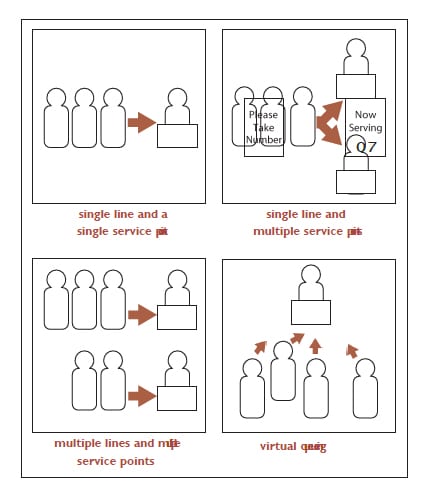
Single Line Queuing Systems
By managing your customer waiting lines more efficiently, you can increase your bottom line. Installing a single line queuing system can speed up customer flow by 30% and reduce “walk-aways” by up to 96%.
Based on the “first come, first served” theory, single-line queuing systems ensure that customers are served by the first available check-out station. Central Display Units (CDUs) provide information for customers in the line, while Positional Display Units (PDUs) provide information at each cashier point.
Customers are called to each position by the press of a calling button by the cashier, meaning that customers are informed of when an agent is open immediately.
Single-line queuing systems can also feature visual and audio messages that communicate promotional messages, enabling you to effectively market to your customers while they are in line.
Don’t Make Customers Choose a Line
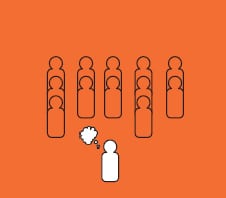 The linear queuing option which has the most potential negative ramifications is the “Multiple Queue – Multiple Service Points” option, which, with the exception of supermarkets and some fast-food restaurants, is not favored by most locations.
The linear queuing option which has the most potential negative ramifications is the “Multiple Queue – Multiple Service Points” option, which, with the exception of supermarkets and some fast-food restaurants, is not favored by most locations.
The danger, in this case, is that customers are forced to choose a line and through no fault of their own, maybe stuck in a slow-moving line, which they will perceive as a very frustrating experience.
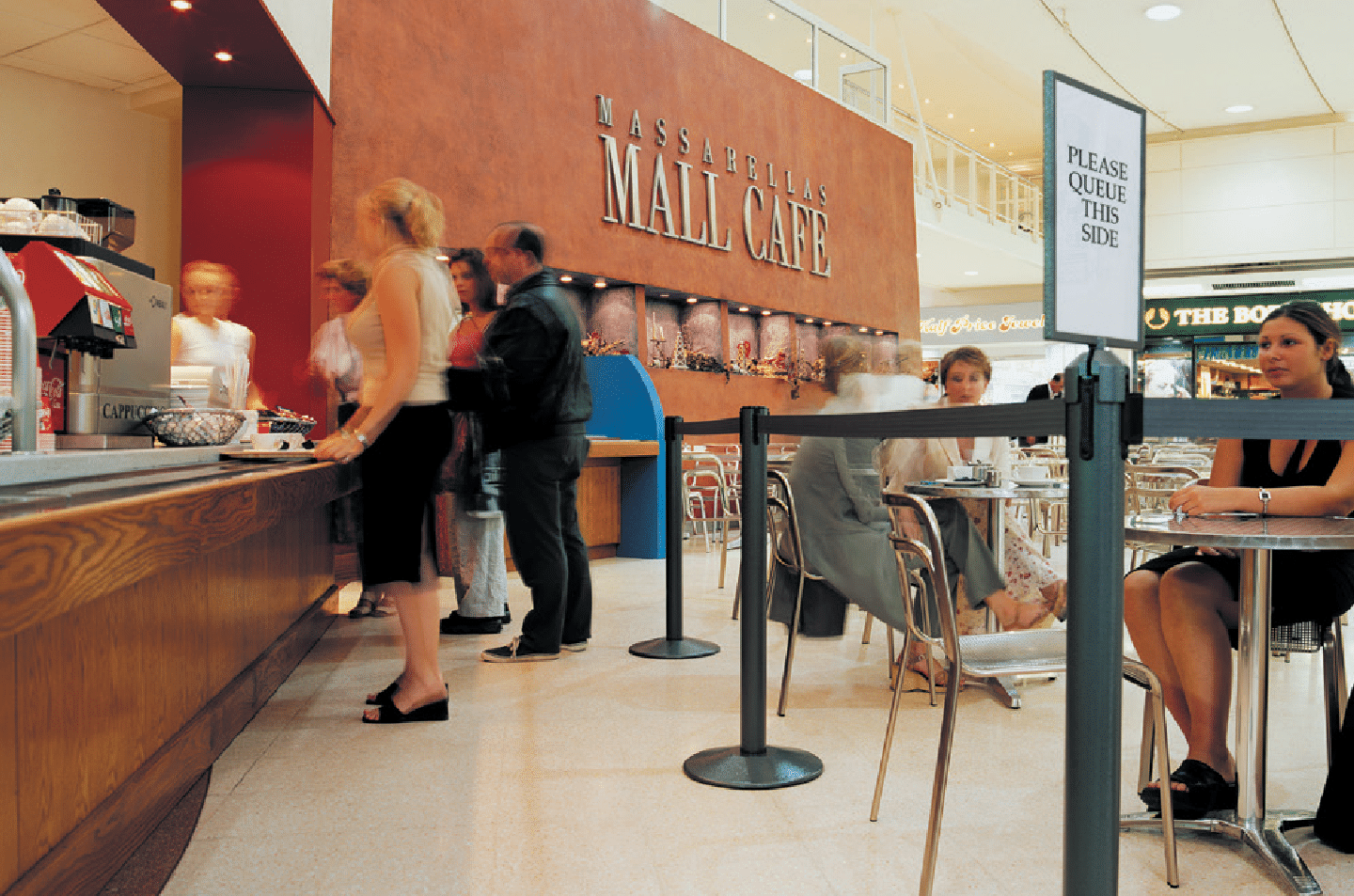
Virtual Queuing
With virtual queuing, there is no physical line of customers. Instead, customers either check-in, or are otherwise identified upon arrival. They then generally receive a ticket and will be called to meet with a service provider at an appropriate time. But they are free to move about a waiting room and do not have to stand and remain focused on how a “line” in front of them is moving. They can fill out forms, read, or carry out personal conversations on their phone. Or, you can direct video or audio messages to them designed to capture their attention while they are waiting.
Virtual queuing is most ideal for hospitals and the offices of other health care providers, as well as financial service providers. If your company wants to identify customers before they reach a staff member (thus enabling prep time), virtual queuing is the solution for you.
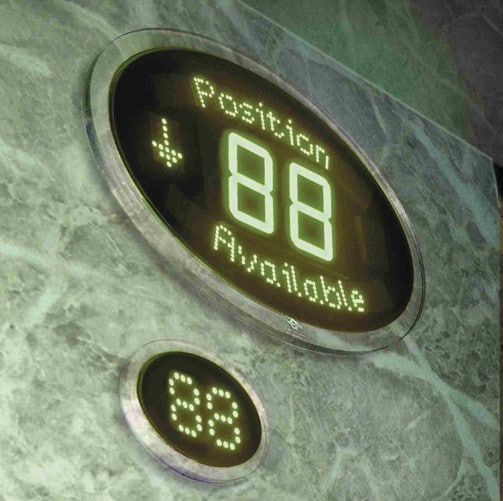
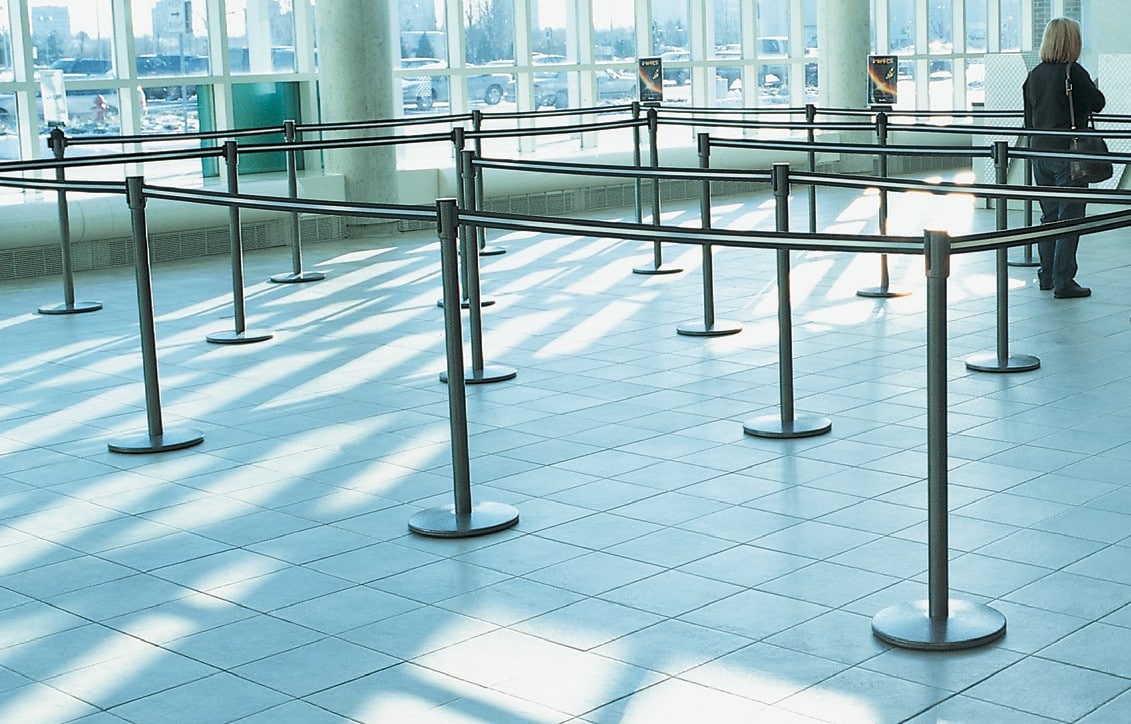
Queue Management Products and Their Benefits
Portable Post and Retractable Belt Line Management Systems
Portable posts with retractable belts are a popular line management system at banks, cafeterias, airports, concession stands, and trade shows. This retractable belt system features a belt, cassette unit, and posts. The system is designed to identify a site’s line space, organize lines of patrons, and keep those lines moving efficiently.
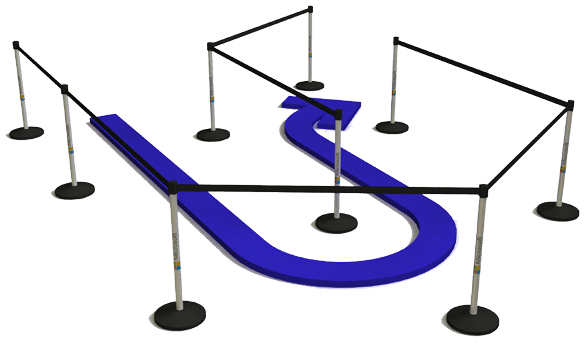
Posts can be set up and configured in different lengths and positions, depending upon the needs of the situation. Position stanchions to make the most effective use of floor space.
Often placing stanchions at exact right angles takes up more space than necessary because people round corners in an arc. Consider where angled lines of stanchions might be better than strict horizontal or vertical arrangements.
Choosing Retractable Belt Barriers: APrimer
Here are some factors to keep in mind when assessing the strengths and merits of various retractable belt stanchion options. Making the right choice could save you money (by minimizing the number of barriers you need) and ensure the safety of your site and patrons.
Post Quality and Size
A quality post will feature single-tube construction to prevent unsightly seams in the middle of the post. Posts made of steel will ensure years of use, even in heavy-duty environments. Because your floor space is valuable, you don’t want bulky posts taking up too much space. Many brands of high-quality stanchions are only two inches in diameter, and you can also choose strong bases that don’t use excessive floor space.
Balance the post’s strength and durability with its weight – the lighter the post, the easier and quicker it will be to move it into the place you need it. Since you want posts to attractively blend into your environment, look for models that offer you a choice of finishes, such as chrome, stainless steel, and brass.
Belt Options
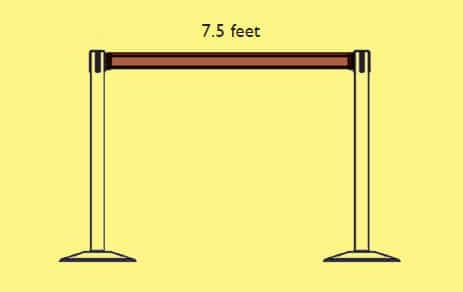 For the longest life span, belts made of woven polyester will retain an attractive “new” look for a longer period of time. Standard belt widths are two inches or six inches (top-to-bottom). Standard belt lengths (left-to-right) are 7.5 feet and 13 feet, although other lengths are available. Remember that the longer the belt, the fewer the number of necessary posts will be.
For the longest life span, belts made of woven polyester will retain an attractive “new” look for a longer period of time. Standard belt widths are two inches or six inches (top-to-bottom). Standard belt lengths (left-to-right) are 7.5 feet and 13 feet, although other lengths are available. Remember that the longer the belt, the fewer the number of necessary posts will be.
Some retractable belt barriers are available with two horizontal belts. This feature provides extra security and helps keep children in line. And some suppliers of retractable belt stanchions also offer the option of having belts printed with messages or advertisements.
Belt Safety
Make sure that any retractable system is safe – you do not want any belt that retracts with an amount of force that could cause injury to anyone in its path. A high-quality retractable belt system will feature a belt that will, upon release from a post, fall to the floor and then slowly and safely retract back into the post. Ask about each model’s cassette unit – it should feature an anti-tamper belt locking system to prevent accidental release of the belt. High-quality retractable belt posts will have a retraction mechanism that will last for more than 250,000 cycles.
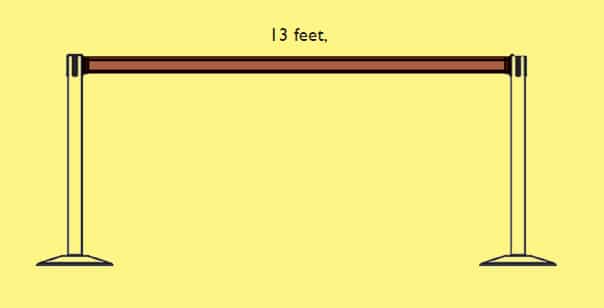
Variations
There are some additional retractable belt barrier options for settings that have different needs than typical indoor line-management applications.
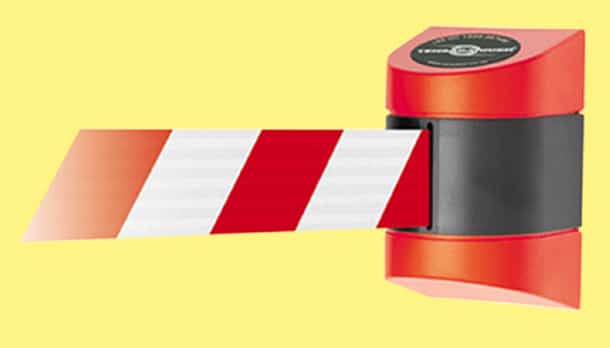
Wall-mounted barriers are used in situations where a permanent but retractable barrier is needed without taking up any floor space. Wall-mounted barriers can close off space between two walls, or between one wall and a post.
Outdoor posts, made of UPVC to withstand heavy weather conditions, are used when a line management system is needed outside, or to convey a strong visual impression about a no-access area. They feature bases that can be filled with liquid, sand or other substances in order to provide extra weight and stability.
Other Queue Management Product Options
Traditional Post and Rope
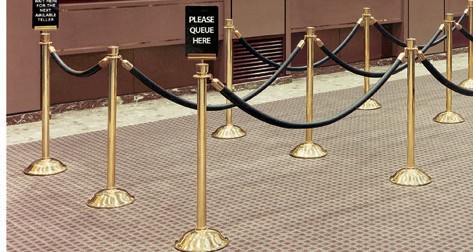 Traditional post and rope provide guidance and line management at quieter, often upscale, and indoor sites, such as banks, hotels, museums, movie theatres, and trade shows. Attractive steel or brass posts and velour posts, with numerous post top and base style options, can match any stylish décor. Post rings can accept rope from any direction, and post tops accommodate signage to provide information to patrons in line.
Traditional post and rope provide guidance and line management at quieter, often upscale, and indoor sites, such as banks, hotels, museums, movie theatres, and trade shows. Attractive steel or brass posts and velour posts, with numerous post top and base style options, can match any stylish décor. Post rings can accept rope from any direction, and post tops accommodate signage to provide information to patrons in line.
In-Line Merchandising
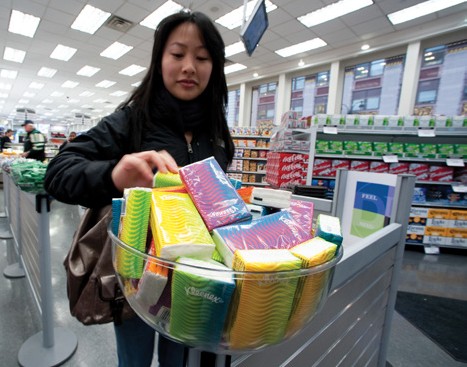 What may seem upon first glance to be a crassly commercial tool, in-line product merchandising stands within lines, has also proven to be very well-received by patrons.
What may seem upon first glance to be a crassly commercial tool, in-line product merchandising stands within lines, has also proven to be very well-received by patrons.
Displays of point-of-purchase products are not just a sales tool; they are a queue management tool. For those interested in the featured products, this in-line (or in-queue) merchandising is convenient.
But even those not inclined to buy those particular products view these displays as a way to help relieve the boredom of standing in the line. Being able to look at other products reduces perceived wait time.
Signage
Clear and accurate signage is another key to effective line management. Signs can be attached to the top of portable posts. Signs regarding line and check-out entrances, exits, and policies should be clearly visible to patrons.
To direct attention to point-of-purchase products, headers featuring promotional messages can be placed on top of merchandising panels.
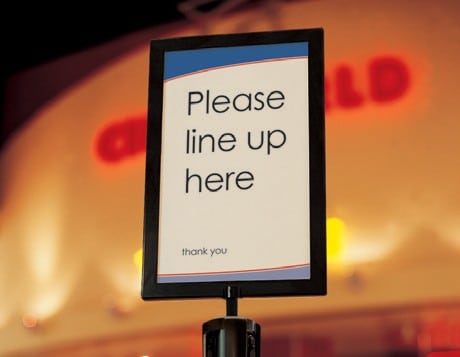
In-Line Merchandising Boosts RetailSales, Customer Satisfaction
What are the characteristics of customers who are in waiting in line at your site?
First, in one respect, they all feel as if they are “done” shopping. Secondly, they are no longer dispersed among the various aisles or departments of your store – they are now grouped together. They are now sharing the exact same experience – waiting to check out.
No other location in your store has as big an impact on customer satisfaction as this pre-checkout queue. And while customers are looking forward to exiting your store, they are also a captive audience. They are very receptive to impulse purchases.
There are a number of ways to make sure the line experience is a positive one for your customers. Most importantly, make sure your line management system is as efficient as possible.
And when the customers are confident that the line will move efficiently, they have positive feelings. They are open to messages from you. Thus, this line is the perfect place for your advertising messages, and for a display of point-of-purchase products.
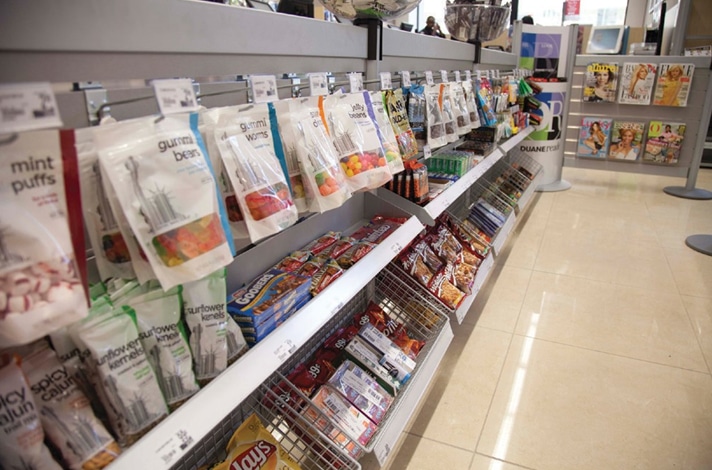
A sophisticated in-line merchandising system not only provides a defined physical layout for your check-out line, but also features structures upon which products can be displayed – shelves, baskets, hooks, and bowls. Attractive products will be in the sight-lines of your customers and within easy physical reach.
You can maximize your store’s dollars-per-square-foot ratio and increase impulse purchases by up to 30% with in-queue merchandising posts, panels, and displays. Proven to work at hardware stores, sporting goods stores, department stores, pharmacies, and electronics stores, these systems are a win-win for both the customers and the store.
Turnstiles
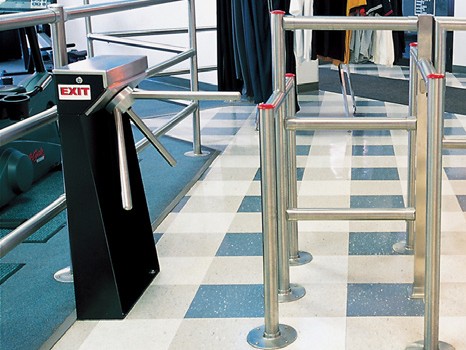 Turnstiles are used to control entry to a site or event. They restrict access to one individual at a time. This is especially important where fares, fees, or tickets are a prerequisite to entry.
Turnstiles are used to control entry to a site or event. They restrict access to one individual at a time. This is especially important where fares, fees, or tickets are a prerequisite to entry.
Turnstiles discourage – and often prevent – any attempts (intentional or unintentional) at “free entry” into a site.
Turnstiles are used in a wide variety of settings, including stadiums, amusement parks, museums, mass transit stations, office lobbies, retail sites, cafeterias, temporary exhibits, casinos, and souvenir stands, to name but a few.
Crowd control barriers
Crowd control barricades (most often made of steel, but sometimes plastic) are generally utilized at events or sites at which larger crowds are expected. The presence of barriers provides a physical and psychological impediment to the notion that lines can be broached. These barricades are used for line management at entrances and within sports stadiums and arenas, and at outdoor concerts, rallies and parades.
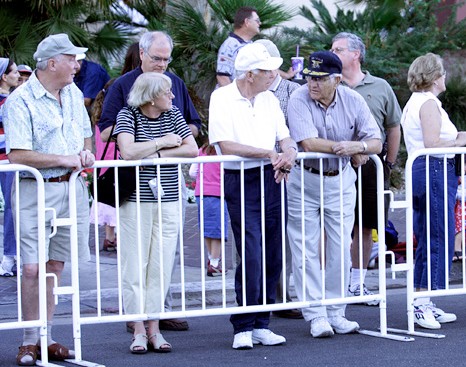
Summary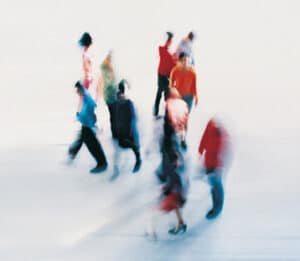
Applying the principles of queuing psychology, and having the proper physical line management tools on hand, are essential practices for any site or event at which people must wait in line.
When lines are perceived as fair and efficient, patrons are happier and the business reaps the benefits of having a customer-friendly atmosphere.
